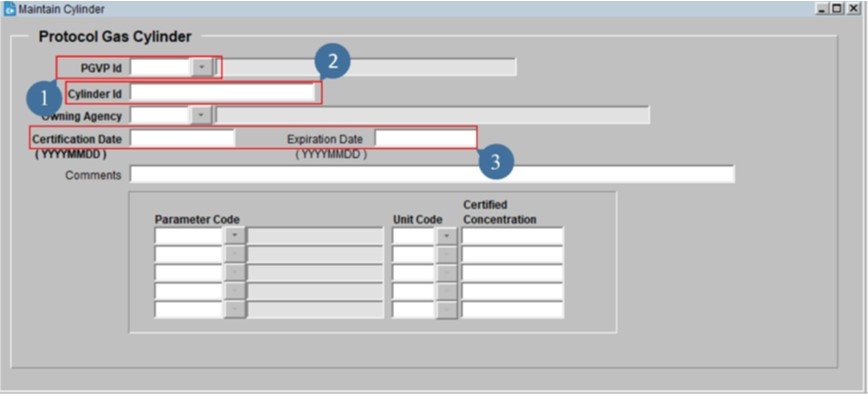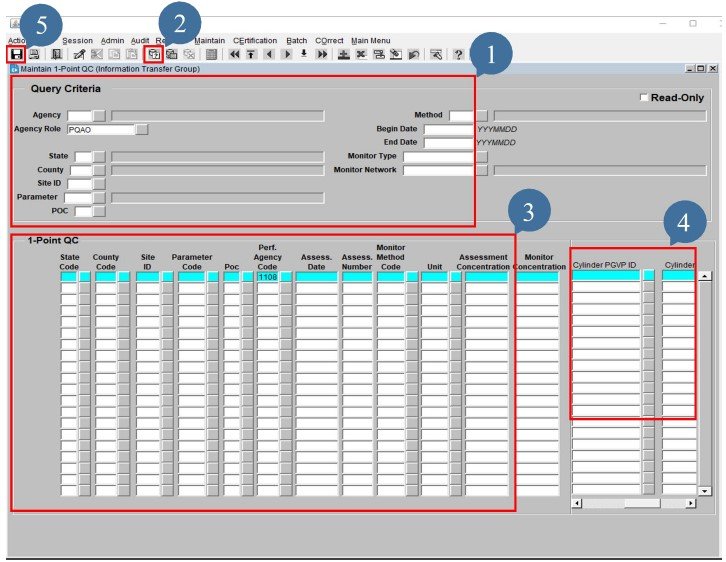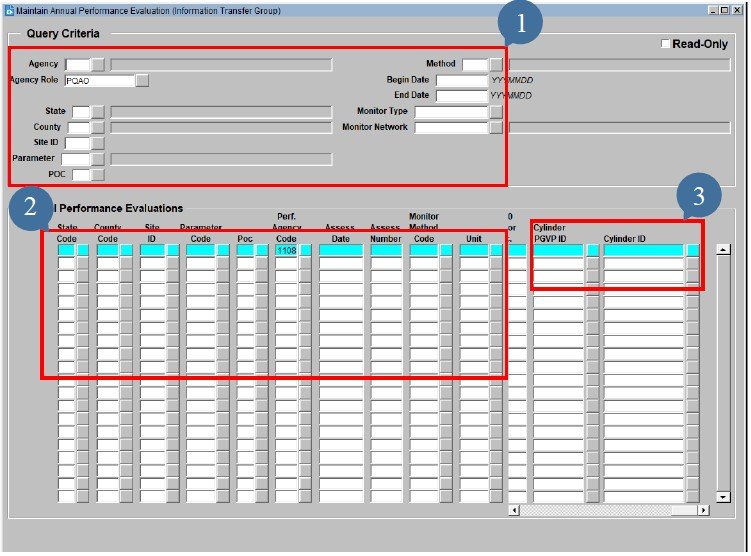On-Line Data Tools - QA
Maintain Cylinder

This is found under the Maintain section on the Menu Bar then select Cylinder. It provides the ability to directly view, enter or edit cylinder data in the database for the selected screening group. This form is optional by SLTs, but EPA highly encourages usage as soon as possible. Monitoring programs that use this form are considered by OAQPS as meeting their annual EPA Protocol Gas reporting requirements and no longer need to participate in the annual AA-PGVP survey. This form documents the EPA Protocol Gas Cylinder Standards used in the NAAQS monitoring networks.
- Producer ID [also known as Protocol Gas Verification Program ID (PGVP ID)] is validated against EPA approved Specialty Gas Producers and Certifiers of EPA Protocol Gas Standards. Valid producer IDs are managed internally by OAQPS through the Maintain Cylinder form.
- Cylinder ID is the serial number of the cylinder assigned by the manufacturer
- Certification Date is the date the cylinder is certified by its manufacturer to contain the specified concentration of the gas identified by the Parameter Code. The Expiration Date is the date after which the cylinder gas concentration is no longer certified to by within the tolerance limits of the cylinder certified concentration.
Maintain - 1-Point QC
The 1-Point QC form (Maintain -> QA Assessments -> 1-Point QC) is used to enter or edit all 1-point quality control check data for a monitor.

- The User will fill out the values that will be used to query records.
- Execute the query using the parameters filled out above.
- Query results will be returned here. The user may add, delete or edit records here.
- New: Producer ID and Cylinder ID are now displayed where present in the database. The Producer ID is a unique identifier of the organization that produced the cylinder being assessed. The Cylinder ID is the unique identifier (e.g. serial number) of the gas cylinder being assessed.
- Click the Save icon.
Maintain - QA Annual Performance Evaluation
The Annual Performance Evaluation form (Maintain -> QA Assessments -> Annual Performance Evaluation) is used to enter or edit all annual performance data for a monitor.

- On this form, users may query annual performance evaluations for a monitor during a specified date range.
- All Annual Performance Evaluations for the queried fields. Users can edit or add performance evaluation data in this section. Individual evaluations are displayed on each line.
- New: Cylinder PGVP ID and Cylinder ID are now present when provided. The Cylinder PGVP ID is a unique identifier of the organization that produced the cylinder being assessed. The Cylinder ID is the unique identifier (e.g. serial number) of the gas cylinder being assessed.
Previous | Next
